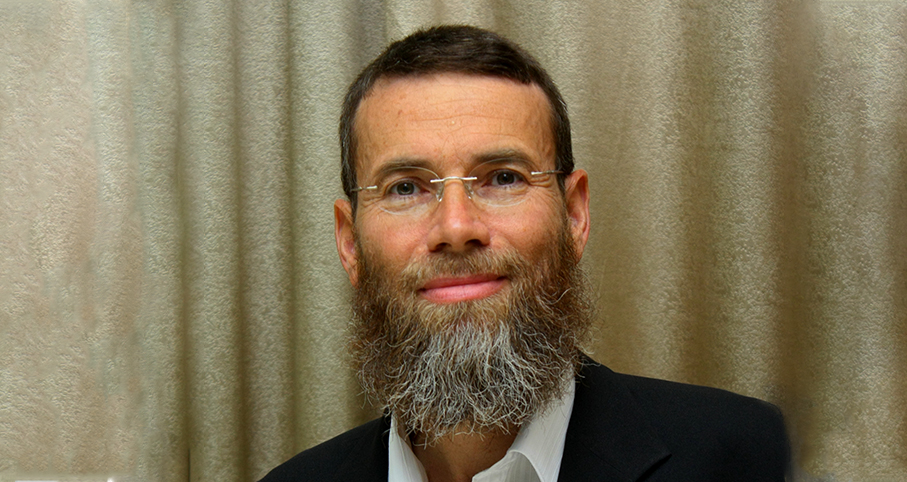Beit Midrash
- Family and Society
- Education
- How to Educate
- Shabbat and Holidays
- The Three Weeks
- Mourning Over the Churban
The ceiling fans in the large dining room were set to full speed, humming loudly as they spun around, in an attempt to subdue the stifling summer heat. The sound of the fan motors was drowned out, though, by the voices of eager children, excitedly greeting friends after a very long ten month wait. The scent of unfinished wood mingling with the smell of freshly cut grass only added to their excitement.
It took a few calls for attention, and more than a few whistle blows, for the young man standing on a chair in the front of the room to quiet the campers. After going through the standard announcements about bunk assignments, daily schedules, camp regulations, and a dire warning for campers to stay out of the kitchen, the head counselor cleared his throat once more.
"This year, we’re going to be working on a project that we’ve never done before," he began. "We, as a camp, will be working together to create a model Beit Hamikdash! Each bunk will receive an assignment to work on. Your learning instructors will focus on the part of the Beit Hamikdash that your particular bunk needs to build, so that you’ll really become experts in your area. The art director has been working together with the learning director, and several art periods per week will be dedicated to building your bunk’s section. Our goal is have the entire model completed before visiting day."
The next few weeks passed too quickly for the young campers. In between playing sports, swimming, and participating in contests, they could be seen painting, cutting, gluing, researching, and admiring, as the final products began to come together. Every wall and vessel and garment had been made with such care, with great attention to detail. The children couldn’t help but be proud of their work.
The long awaited day finally came. It was several days before Tisha B’Av, which was to be followed shortly after by visiting day. All of the campers, and the entire staff, gathered together outside. The completed model of the Beit Hamikdash had been assembled by the older bunks. The area had been roped off to keep the campers from actually touching the model, but they were allowed to stand just beyond the enclosure, and view the finished product. The children felt such a sense of pride at what they had accomplished together.
The head counselor called for attention. "Great job everybody! I’d like everyone to sit down on the grass over there, and then we’ll hear a few words from the learning director about this project."
The campers stepped back to the designated area. Suddenly, several campers started screaming. All eyes were drawn to the roped off area, as, much to their horror, a ball of fire flew toward the model Beit Hamikdash! All too quickly, the model was consumed in flames. The campers could only stand, openmouthed, as the beautiful structure was burned into ashes. Only the Western Wall remained unharmed.
In fact, the whole thing had been planned. Before the campers appeared, the learning director had attached a string to the model. Another counselor stood behind a tree, holding a wad of cloth soaked in lighter fluid. At the prearranged moment, the counselor lit the cloth and sent it flying down the string, right into the center of the Beit Hamikdash. The learning director had poured water over the Western Wall beforehand, so that it alone wouldn’t burn.
The voice of the learning director broke the silence. "Here we sit, crying, devastated, over the destruction of five weeks of effort. What are we crying for? For paint and glue? For pieces of cardboard? Two days from now is Tisha B’Av. We are supposed to be mourning the destruction of the real Beit Hamikdash, which was so much more valuable than our model. I hope that now we will be able to cry real tears, and that those tears will lead to the rebuilding of the real Beit Hamikdash in Jerusalem."
Was the camp allowed to deceive the children in this way, and destroy the model that they had made?
Answer of Rabbi Yaakov Ariel, shlita:
It was permitted for the head counselor to do this, and he did a great thing, by actualizing the feelings of loss for the Beit Hamikdash.
The prohibition to lie was not violated, because he did not say any direct untruths. He only said that they would complete the building before visiting day, not that the parents would actually get to see it.
The prohibition of bal tashchit (not wasting) was also not violated, because destroying objects for an educational purpose is permitted (see tractate Shabbos 105).
Even though he caused the children pain, because he did this only in order to educate them about the loss of the Beit Hamikdash, it was permitted. This is similar to the fact that it is permitted for an educator to hit his student in order to educate him (see tractate Makot 8.).
However, it is possible that the head counselor went a little too far, and gave the children too hard a ‘slap.’ In fact, it is possible that such an act could cause children the opposite of the intended effect. Therefore, the head counselor would have had to consult with someone who understands the nature of children well, before putting such a plan into action.




















